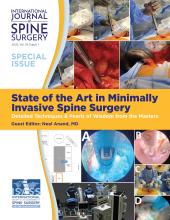ABSTRACT
Background T-cell lymphoblastic lymphoma is a rare disease and an aggressive neoplasm of precursor lymphoblasts. We present a case of lumbar epidural T-cell lymphoblastic lymphoma which appeared with clinical features of epidural spinal cord compression.
Methods A 38-year-old male patient presented with weakness in the lower extremities and newly developed urinary incontinence. His medical history included precursor T-cell acute lymphoblastic leukemia and treatment with allogeneic bone-marrow transplantation 5 years previously. Spinal magnetic resonance imaging (MRI) revealed an epidural mass lesion at L2–L4 levels and there was no sign of leukemia or lymphoma in clinical, laboratory, and radiological examinations. Surgery was planned for obtaining diagnostic material. Decompressive laminectomy and subtotal excision of the tumor were performed.
Results At surgery, the tumor consisted of yellow-colored and hypovascular soft tissue fragments. It was encircling the spinal cord and spreading through the left L3 foramen. The patient underwent adjuvant chemoradiotherapy after the histopathological evaluation. At 2-month follow-up, the patient was able to walk without assistance, but the urinary incontinence was the same. At 5-month follow-up, the disease progressed, and the patient passed away because of infective endocarditis.
Conclusion Spinal lymphomas may display its characteristic “wrap-around” fashion in the MRI. In this report, we shared the microsurgical appearance of this fashion. As the lymphomas are chemoradiosensitive tumors, the treatment should be managed with a multidisciplinary approach.
- epidural space
- spinal cord compression
- precursor T-cell lymphoblastic leukemia-lymphoma
- recurrence
- tumor
Footnotes
Disclosures and COI: We did not receive any specific grant from funding agencies in the public, commercial, or not-for-profit sectors. The authors report no conflicts of interest.
- This manuscript is generously published free of charge by ISASS, the International Society for the Advancement of Spine Surgery. Copyright © 2021 ISASS







